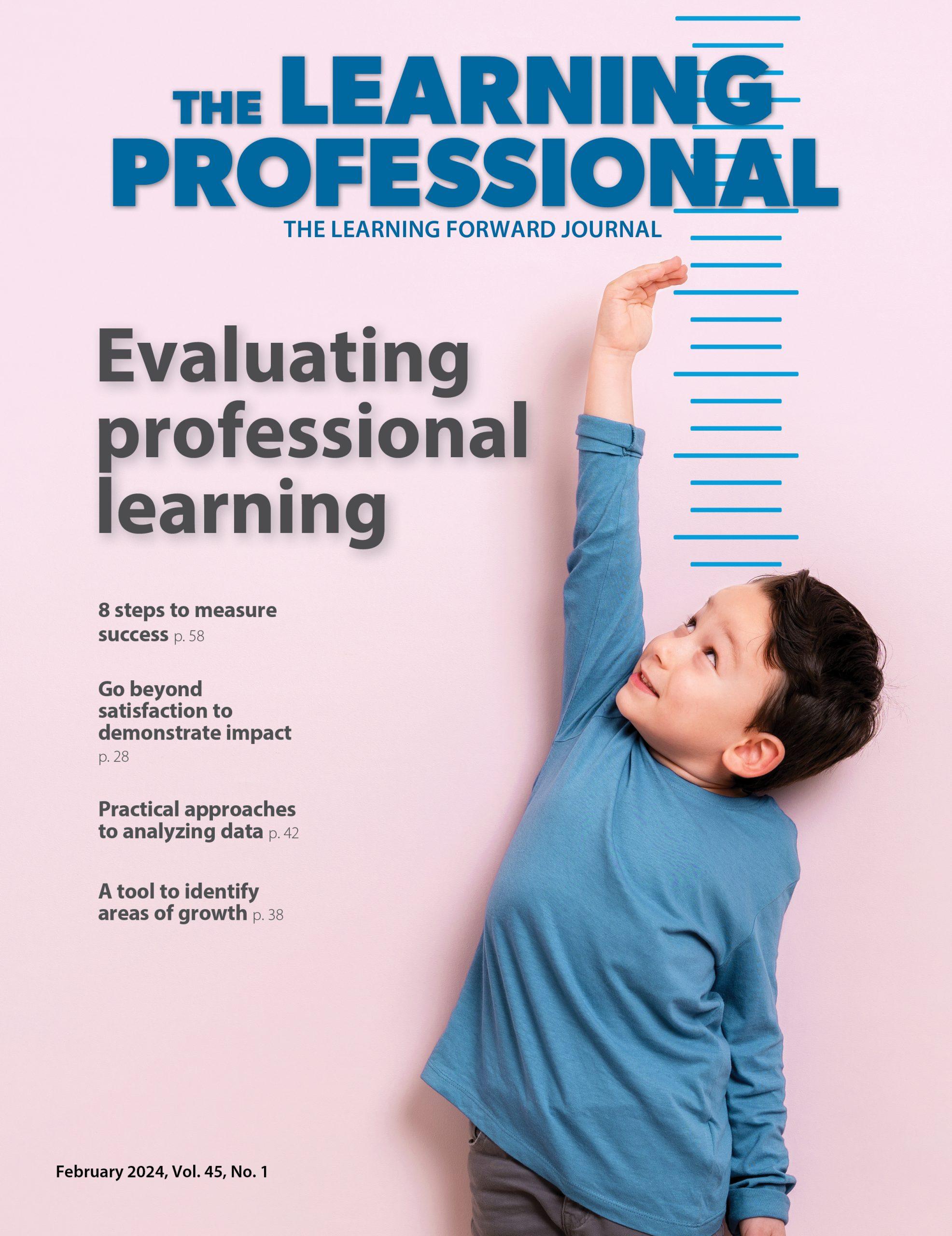COACHES NOTEBOOK
Coaches keep everyone working toward a common goal
By Kathy Perret
Categories: Coaching, CollaborationApril 2023
The landscape of school improvement can seem overwhelming, with multiple moving parts and a host of players who hold roles that are critical but disconnected from each another. Many districts have a resource for bringing these pieces together that they often overlook: instructional coaches. Coaches can serve as the glue that binds people and strategies together, ensuring that everyone is working toward a common goal and putting that goal into action.
The secret to their “stickiness” is coaches’ hands-on work at multiple levels. They work one-on-one with teachers to provide guidance that is consistent with district and schoolwide goals but also personalized to teachers’ and students’ challenges and strengths. They also partner with school leaders to ensure that school improvement plans are responsive to the evolving needs of students and staff. And across these levels, they facilitate data conversations and partner with teachers by co-planning, co-teaching, and modeling strategies for teachers to focus on both individual and schoolwide goals.
''Coaches can serve as the glue that binds people and strategies together, ensuring that everyone is working toward a common goal and putting that goal into action.'' @KathyPerret #TheLearningPro Share on X
Coaches build coherence
In my work consulting to coaches and co-hosting the weekly #educoach chat on Twitter, I see many examples of this “glue” function that a coherent coaching program provides. One of those examples comes from Shelby County Public Schools in Shelbyville, Kentucky. Jennifer Cox, director of curriculum, instruction, and assessment, oversees the work of the district’s instructional coaches. She explained how coaches build coherence in the district’s innovative 30-60-90 improvement plan process.
Cox said that the 30-60-90-day model is a framework often used in business, especially in onboarding employees, but that, in her district, “We use it to set goals, name actions, and measure progress.” Each month, throughout the school year, the district’s superintendent, Sally Sugg, leads improvement conferences with each of the district’s 14 school administration teams. Team compositions vary among schools but always include the principal and instructional coach.
When I asked Cox why coaches are seen as a vital part of the teams, she told me that administrators recognize the importance of coaches aligning their support for teachers with district goals and learning priorities and value coaches’ input to those priorities based on what they see and hear in school buildings. She added that including coaches on the teams also communicates the high value the district places on coaching and “helps principals and the superintendent see the tangible connection between coaching and student learning.”
During these meetings, teams discuss and reflect on the district’s three main school improvement pillars: culture and climate; the district’s profile of a graduate, which describes six enduring skills students should know and be able to do by graduation; and academic progress. Every participant is responsible for planning actions to take in the next 30 days to help meet their building’s specific identified needs and then being accountable for reporting on those to the group at the next meeting. Cox says, “These meetings are intended to model the ongoing feedback loop that we know is so important for our learners — both adult and student learners.”
It’s no surprise to those of us who are coaching veterans that the instructional coaches play a crucial role in helping the team members put these goals and plans into action. They develop individual and group coaching sessions, design lab classroom visits, facilitate professional learning communities, and provide other support tailored to the school’s monthly goals. In addition, coaches meet with principals every one to two weeks to continue refining and reflecting on their work and progress.
By working across these levels and ensuring that all the action steps they support are aligned, coaches help school improvement plans become living, breathing documents that drive real change, rather than notebooks sitting on a shelf.
Coaches benefit from support
As a coach of coaches, I’d be remiss if I didn’t point out that coaches can’t create coherence on their own. They need buy-in from both teachers and leaders. They also need support. All of the Shelby County coaches have engaged in comprehensive professional learning about the Cognitive Coaching approach from the Thinking Collaborative, which is focused on translating beliefs into sustained action, and author and education consultant Diane Sweeney’s student-centered coaching model, which centers on shifting the coaching focus from “fixing teachers” to working collaboratively to enhance student outcomes, grounded in student data.
Cox understands that coaches need consistent support to refine their skills and improve their practice and that investing in building their capacity will ultimately lead to better outcomes for teachers and students. To facilitate this, she provides monthly half-day sessions for coaches to come together and reflect on their work, share ideas, and collaborate on new strategies. These sessions are designed to create a supportive learning community where coaches can openly discuss their challenges and successes and receive feedback and guidance from their peers and Cox.
Supportive coaching isn’t about fixing teachers. It’s about ''...working collaboratively to enhance student outcomes, grounded in student data.'' @KathyPerret #TheLearningPro Share on XConsistent and supportive presence
Fortunately, the Shelby County Public Schools aren’t alone in the way they use coaching. This district is just one of many examples of sustained school improvement where instructional coaches support professionals in many important roles. But this district is a model for how coaches can serve as a catalyst for coherence, providing a consistent and supportive presence to ensure that the school improvement plan remains a priority for all stakeholders and that everyone is working together toward a common goal.
Whether you are a teacher, administrator, or community member, I urge you to recognize and support the vital work of instructional coaches in your schools. Their expertise, dedication, and personalized approach can make the difference in helping teachers and students reach their full potential. By working together and investing in their expertise, we can create a brighter future for all students.
Download pdf here.
Coaches can serve as the glue that binds people and strategies together, ensuring that everyone is working toward a common goal and putting that goal into action.

Kathy Perret (kathyperretconsulting@gmail.com) is an independent educational consultant and virtual coach focused on instructional coaching.
Categories: Coaching, Collaboration
Recent Issues
LEARNING TO PIVOT
August 2024
Sometimes new information and situations call for major change. This issue...
GLOBAL PERSPECTIVES
June 2024
What does professional learning look like around the world? This issue...
WHERE TECHNOLOGY CAN TAKE US
April 2024
Technology is both a topic and a tool for professional learning. This...
EVALUATING PROFESSIONAL LEARNING
February 2024
How do you know your professional learning is working? This issue digs...










